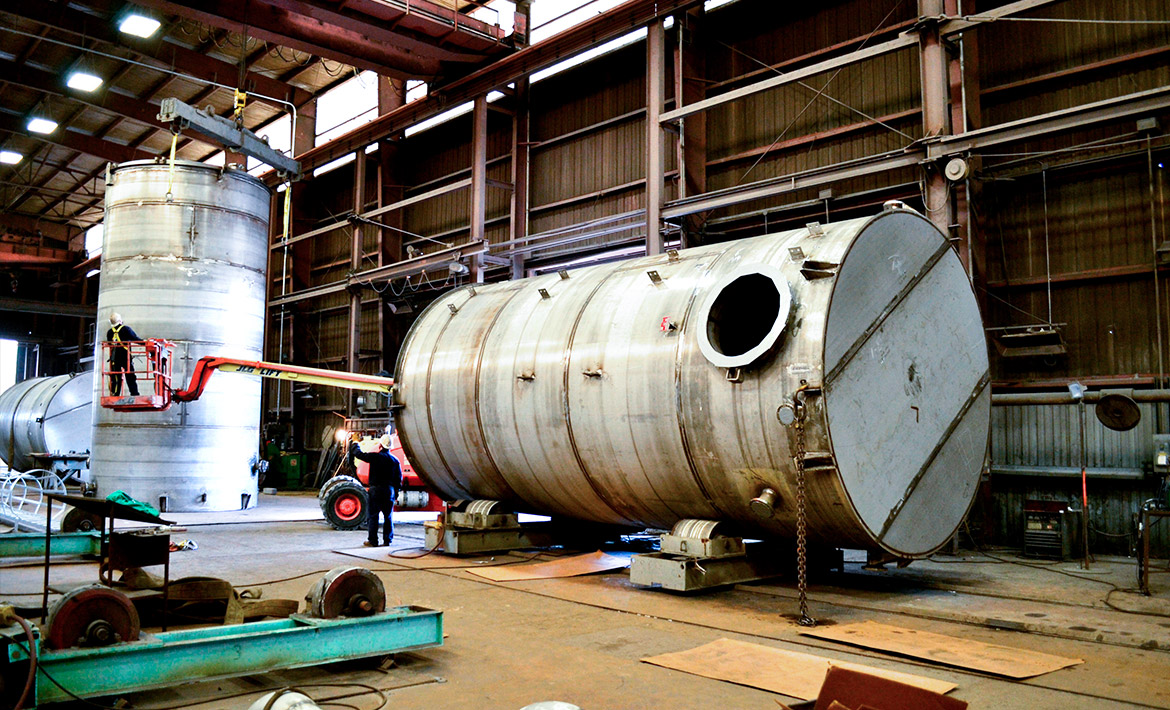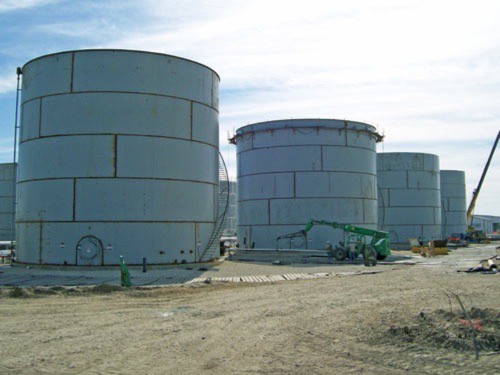A Step-by-Step Take A Look At the Setup Refine of Welding Evaluation Techniques
Welding inspection is an essential process that assures structural honesty and safety. The installment of evaluation strategies involves a number of systematic steps, each indispensable to accomplishing trusted results. From preparation and device choice to performing non-destructive and visual examinations, each phase demands mindful attention. Comprehending these treatments can greatly improve high quality assurance in welding jobs. What obstacles arise in carrying out these methods, and how can they be properly attended to?
Comprehending the Value of Welding Evaluation
Welding evaluation is an important element of making sure structural integrity and safety and security in building and production processes. This practice entails reviewing welded joints for issues, ensuring that they satisfy certain criteria and laws. By systematically evaluating weld high quality, assessors can determine concerns such as cracks, voids, and insufficient blend, which can compromise the stamina and sturdiness of structures.
The relevance of welding inspection expands past prompt security worries; it assists avoid expensive failings and possible threats in the long-term. Reliable inspection strategies foster conformity with industry criteria, therefore enhancing the general dependability of bonded components. Additionally, a robust inspection procedure contributes to maintaining the reputation of producers and contractors, as it assures clients of the top quality of their jobs. Ultimately, understanding the relevance of welding evaluation is critical for advertising safe construction techniques and making sure the durability of important infrastructure and products.
Picking the Right Tools for Inspection
When choosing the proper tools for assessment, it is vital to consider the details requirements of the welding procedure and the materials included. Different examination methods, such as visual, ultrasonic, and radiographic testing, demand distinct tools customized to their one-of-a-kind needs. For aesthetic assessments, tools like amplifying glasses and calipers are essential for evaluating weld top quality. Ultrasonic screening requires specialized equipment qualified of sending and obtaining acoustic waves to identify inner flaws. Radiographic screening, on the other hand, makes use of X-ray or gamma-ray resources alongside sensitive film or electronic detectors to expose variances.
Additionally, individual protective equipment (PPE) is important to ensure the security of inspectors throughout assessments. Selecting the right tools not only improves the accuracy of examinations yet additionally adds to the overall integrity and safety and security of the welding task. Subsequently, an extensive understanding of readily available devices and their applications is necessary for effective welding evaluation.
Getting ready for the Assessment Refine
Before starting the assessment procedure, it is necessary to establish an extensive strategy that details the extent and goals of the assessment. This strategy needs to include particular requirements that define what makes up appropriate high quality in the welding job being inspected. Determining the pertinent codes and standards is crucial, as they will certainly assist the assessment criteria and techniques.
In addition, workers involved in the inspection has to be appropriately educated and accredited in welding assessment strategies to assure reliability and accuracy. A checklist can be valuable in arranging the different facets of the inspection, ranging from devices readiness to environmental problems that can affect the analysis.

Logistical considerations such as scheduling, readily available resources, and communication between team members should be resolved. By preparing methodically, assessors can boost the performance of the assessment and guarantee that all crucial factors are appropriately considered before waging the evaluation itself.
Carrying Out Visual Evaluations

Performing aesthetic examinations is an essential action in the welding assessment procedure, needing mindful preparation to ensure efficient evaluation. Examiners have to know with crucial defect signs that can signal potential issues in weld high quality. By concentrating on these aspects, one can boost the overall integrity of the evaluation end results.
Getting Ready For Visual Evaluation
Aesthetic examination functions as an essential initial step in the welding examination process, guaranteeing that any kind of possible issues are recognized early (API 650 Welding Inspection). Appropriate prep work is vital for efficient aesthetic evaluation. Examiners must begin by evaluating relevant documents, including welding treatments and specs, to understand the task requirements. They need to gather needed devices, such as multiplying glasses, flashlights, and ideal personal safety equipment (PPE) A complete evaluation of the evaluation area is critical; inspectors should validate it is tidy and free of obstructions. In addition, it is essential to develop perfect lights conditions to boost presence of welds. By taking these primary actions, inspectors can develop an environment for recognizing discrepancies and assuring the stability of the bonded structures
Trick Problem Indicators
A detailed understanding of essential problem indicators is crucial throughout visual inspections to ensure the quality and safety of welded joints. Inspectors should concentrate on certain signs such as splits, porosity, damages, and insufficient blend. Cracks may look like sharp lines and can compromise architectural honesty. Porosity materializes as tiny openings that can deteriorate weld stamina. Undercuts, which are grooves along the click here to read weld edge, can bring about stress and anxiety focus. Incomplete combination indicates that the weld metal did not correctly bond with the base material, causing a weak joint. By systematically identifying these defects, examiners can determine conformity with industry standards and boost the total reliability of bonded structures, inevitably adding to safer operational problems.
Implementing Non-Destructive Examining Strategies

Countless non-destructive testing (NDT) strategies are essential to ensuring the integrity of bonded frameworks without compromising their functionality. These methods allow assessors to examine weld top quality and spot issues without causing damage to the materials being evaluated. Usual NDT strategies consist of ultrasonic testing, radiographic screening, magnetic fragment screening, and color penetrant screening. Each method serves a particular objective, resolving different sorts of problems such as fractures, porosity, or insufficient combination.
Executing NDT methods requires a methodical strategy, starting with selecting the proper method based upon the products and the nature of the weld. Training personnel in these look at here now strategies is essential for exact outcomes. Furthermore, developing clear treatments and criteria guarantees uniformity throughout the examination procedure. By incorporating NDT right into the welding inspection operations, organizations can boost the reliability of their products while lessening prospective threats related to structural failings. This positive approach ultimately adds to maintaining safety and security and high quality criteria in bonded constructions.
Documenting and Analyzing Assessment Outcomes
Efficient paperwork and analysis of assessment outcomes are crucial parts of the welding examination process. Exact records of assessment searchings for work as a reference for quality control and conformity with market requirements. API 650 Welding Inspection. Assessors ought to make use of structured kinds or digital platforms to log details such as the kind of weld, examination methods utilized, and any kind of disparities recognized during the assessment
As soon as data is collected, extensive evaluation is essential. This involves comparing outcomes versus established standards to recognize trends or repeating issues. Analytical devices may be used to quantify problems and analyze their effect on total weld quality.
Moreover, efficient interaction of searchings for to pertinent stakeholders is crucial. Records and recaps need to be concise and clear, highlighting crucial investigate this site insights and suggestions for restorative actions. By methodically recording and evaluating assessment results, organizations can foster continual renovation in welding practices and boost product honesty.
Frequently Asked Inquiries
What Qualifications Are Needed to End Up Being a Welding Assessor?
To end up being a welding inspector, one normally requires pertinent certifications such as AWS CWI, together with experience in welding techniques, expertise of welding codes, and efficiency in examination strategies to guarantee top quality and safety and security requirements.
How Usually Should Welding Inspections Be Conducted?
Welding examinations ought to be conducted routinely, typically after each weld is finished, and occasionally throughout tasks. Variables such as project intricacy, sector criteria, and governing requirements can influence the frequency of these evaluations.
What Is the Price of Welding Examination Solutions?
The cost of welding evaluation services varies significantly based upon elements such as task intricacy, location, and dimension. Generally, prices range from $100 to $150 per hour, with added costs for specialized screening and accreditations.
Are There Certifications for Welding Inspectors?
Yes, there are different qualifications for welding inspectors, including those supplied by the American Welding Society (AWS) and the International Institute of Welding (IIW) These certifications ensure examiners have the needed abilities and expertise for reliable examinations.

How Do I Choose an Examination Provider?
To pick an inspection provider, one need to evaluate qualifications, experience, market online reputation, and client reviews. Additionally, contrasting service offerings and rates can assist assure the chosen supplier satisfies certain project requires efficiently.
Additionally, employees included in the evaluation must be appropriately trained and certified in welding evaluation techniques to ensure reliability and accuracy. Conducting visual inspections is a crucial step in the welding inspection procedure, calling for mindful prep work to ensure effective assessment. Visual assessment offers as an essential initial step in the welding inspection procedure, assuring that any kind of prospective problems are recognized early. Reliable documents and evaluation of evaluation results are vital parts of the welding inspection procedure. Welding examinations need to be performed frequently, normally after each weld is completed, and periodically throughout jobs.